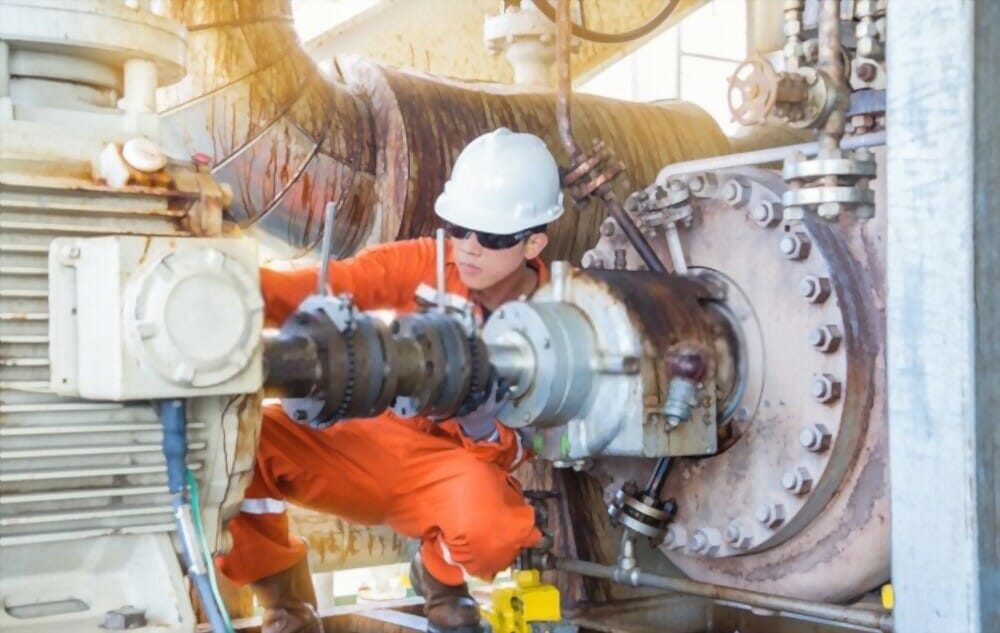Have you ever struggled with installing mechanical seals in centrifugal pumps? Improper installation can lead to leaks, decreased efficiency, and costly downtime.
In this blog post, we’ll guide you through the step-by-step process of correctly installing mechanical seals in centrifugal pumps.

Switch Off Power
Before beginning the process of installing a mechanical seal in a centrifugal pump, it is essential to switch off the power supply to the pump.
Cut the Plumbing – Isolate the Fluid from the Pump
The next step is to isolate the fluid from the pump by cutting the plumbing. This involves closing any valves connected to the pump and disconnecting the pipes or hoses that carry the fluid to and from the pump. Proper isolation prevents fluid leakage during the seal replacement process.
Unplug the Centrifugal Pump
After isolating the fluid, unplug the centrifugal pump from its power source.
Detach Impeller
To access the mechanical seal, the impeller must be detached from the pump shaft. Remove any fasteners or locking mechanisms that secure the impeller to the shaft, and carefully remove the impeller from the pump housing.
Remove Old Seal
With the impeller removed, the old mechanical seal can now be accessed. Carefully remove the old seal from the pump shaft and housing, taking note of its orientation and any spacers or springs that may be present. Clean the shaft and housing thoroughly to ensure a proper fit for the new seal.
Replace New Seal
Install the new mechanical seal in the same orientation as the old seal. Follow the manufacturer’s instructions, ensuring proper alignment and lubrication of the seal faces, and tighten the gland bolts evenly to the specified torque.
Reattach Impeller
Once the new mechanical seal is in place, reattach the impeller to the pump shaft. Secure the impeller using the appropriate fasteners or locking mechanisms, ensuring that it is properly aligned and rotates freely.
Reconnect Casing
Reconnect the pump casing, making sure that all gaskets and seals are properly seated and that the casing is securely fastened. Double-check that all connections are tight and properly aligned to prevent any leaks or misalignment.
Reconnect Pump
Reconnect the pipes or hoses to the pump, ensuring that all connections are secure and properly sealed. Open any valves that were closed during the isolation process, allowing the fluid to flow through the pump once again.
Machine Restart
After completing the installation of the mechanical seal and reconnecting all components, the centrifugal pump is ready to be restarted. Turn on the power supply to the pump and monitor its operation for any signs of leaks or unusual noises. If the pump operates smoothly and without any issues, the mechanical seal installation is complete.

FAQs
What tools are required to install a mechanical seal?
You’ll need a seal installation tool, a clean work area, and the appropriate lubricant for the seal material.
What type of lubricant should I use on the mechanical seal?
Use the lubricant recommended by the seal manufacturer, typically a silicone-based lubricant for elastomeric seals and a petroleum-based lubricant for other seal materials.
How tight should I make the gland bolts when installing the seal?
Tighten the gland bolts evenly to the torque specified by the seal manufacturer, as over-tightening can cause distortion and premature failure of the seal.
What should I do if the mechanical seal leaks after installation?
Check for proper installation, alignment, and lubrication of the seal. If the leak persists, disassemble the pump and inspect the seal for damage or contamination.
How can I prevent damage to the mechanical seal during installation?
Handle the seal components carefully, avoid touching the seal faces, and ensure that the pump components are clean and free of debris before installation.
What is the recommended break-in procedure for a new mechanical seal?
Follow the manufacturer’s break-in procedure, which typically involves running the pump at reduced speed and pressure for a specified period to allow the seal faces to seat properly.
How often should I replace the mechanical seal in my centrifugal pump?
Replace the mechanical seal according to the manufacturer’s recommended service interval or when signs of leakage or deterioration are observed during routine maintenance inspections.
In conclusion
Properly installing mechanical seals in centrifugal pumps is crucial for optimal performance and longevity. By following these step-by-step instructions, you can ensure a successful installation.
For more helpful tips on pump maintenance and troubleshooting, visit our blog or contact our expert team today.


